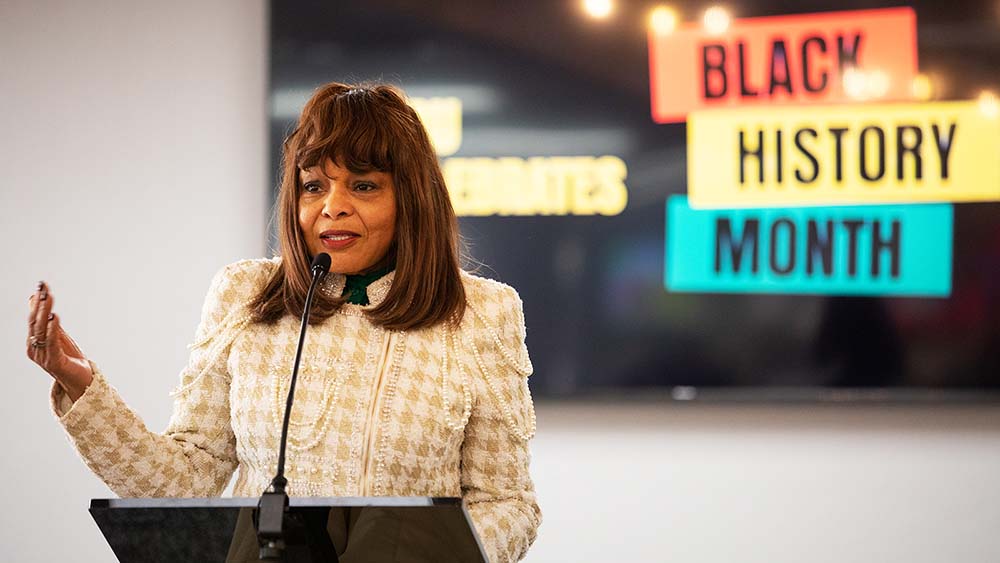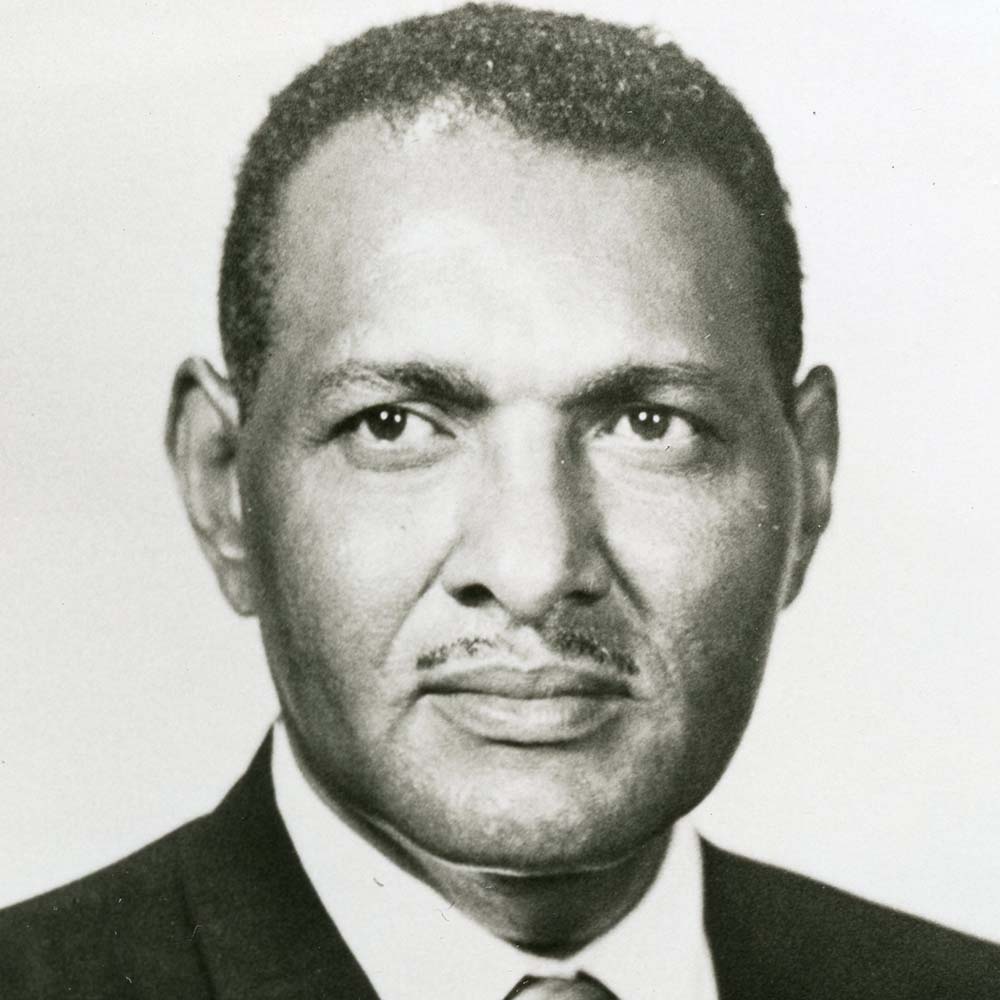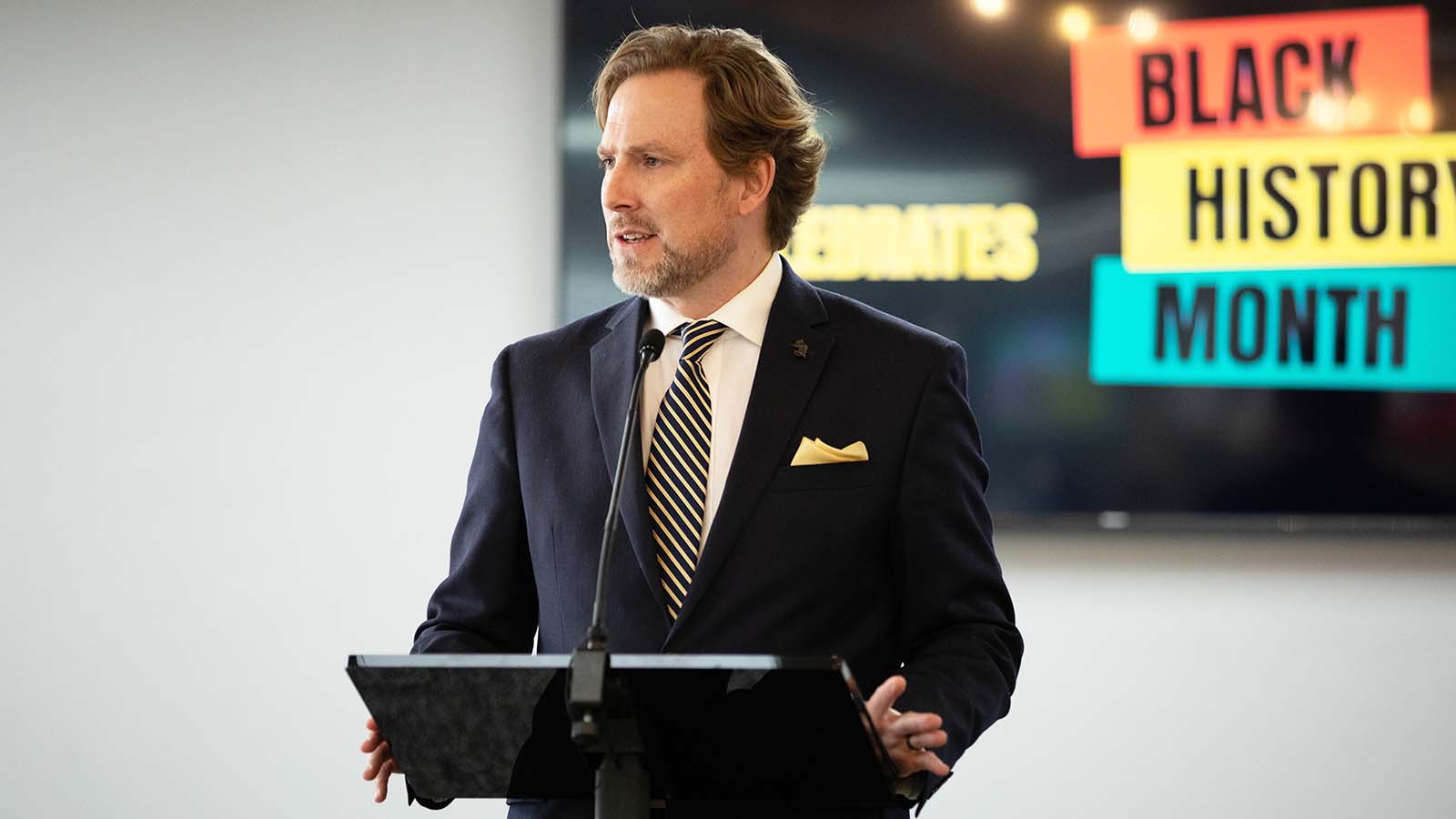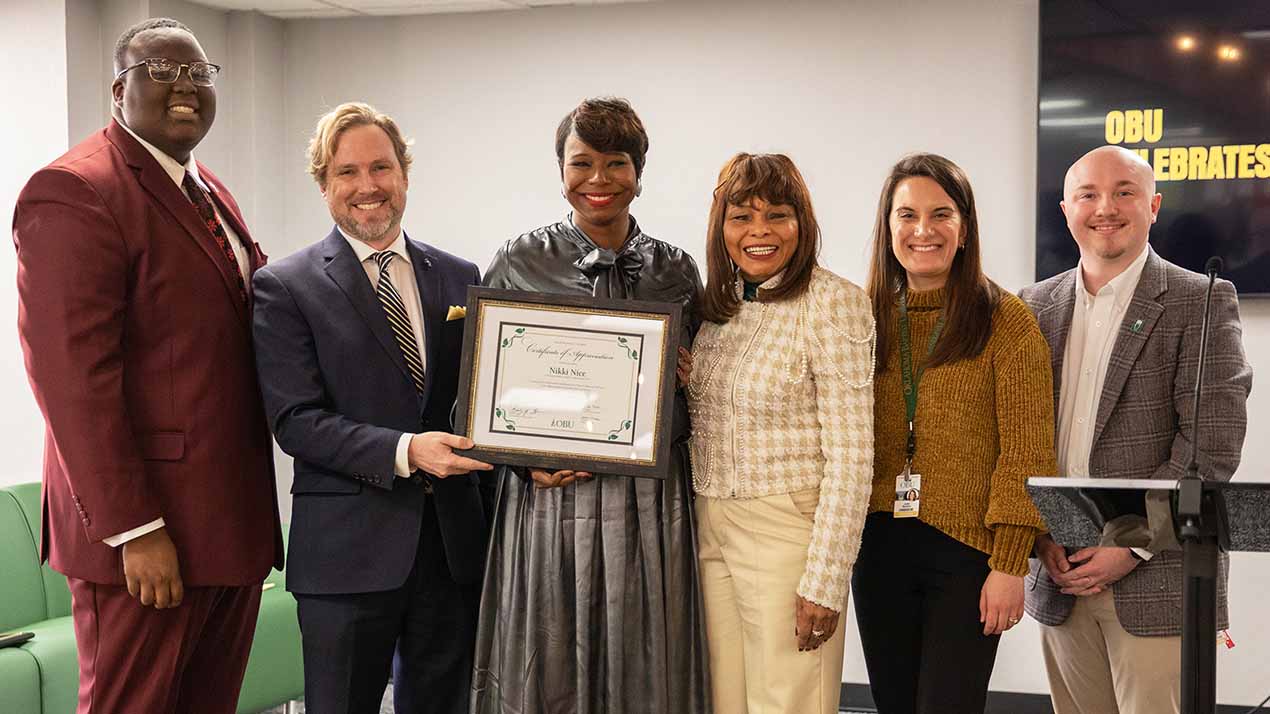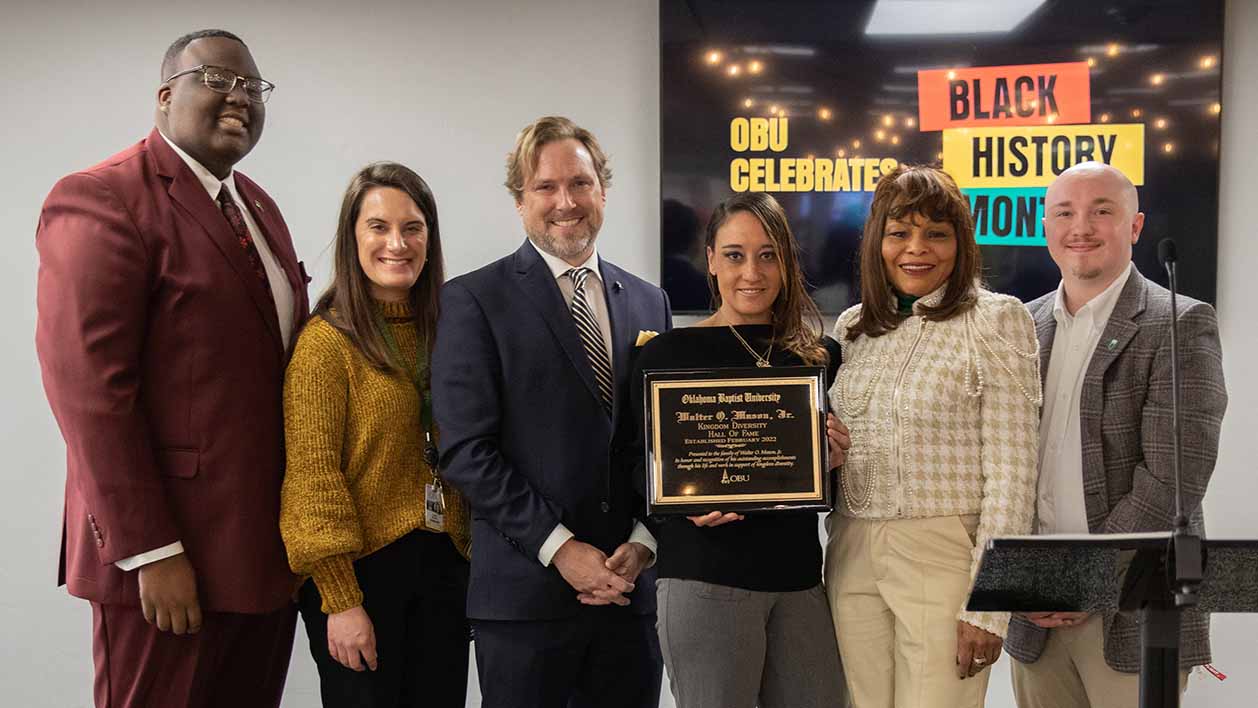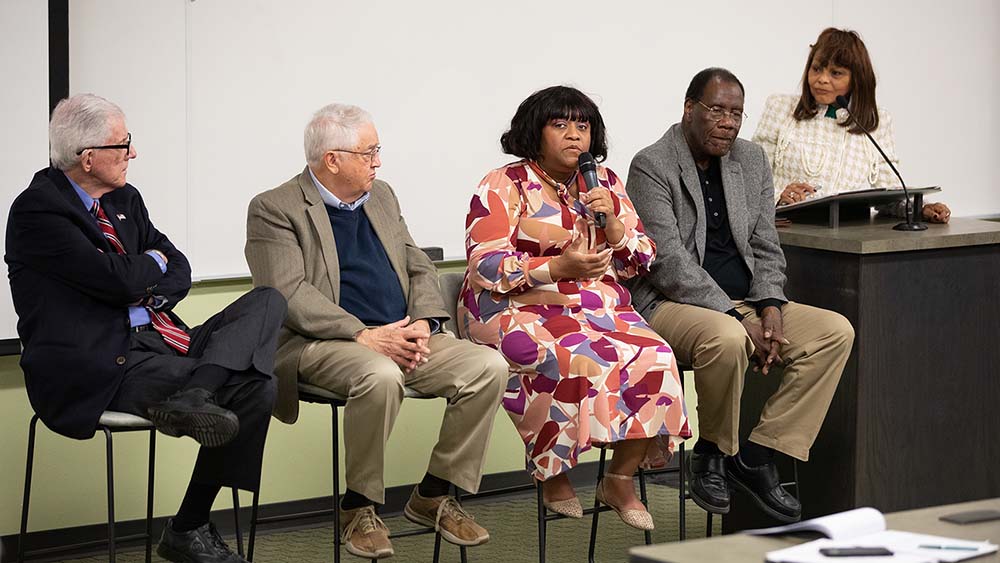University Celebrates Black History Month with Unveiling of Exhibit on Walter Mason, Discussion Panel
February 16, 2022
OBU unveiled a special exhibit Feb. 9 on Walter O. Mason Jr., the first Black professor at OBU. The ceremony took place in the main student lounge area on the first floor of the Geiger Center on the OBU campus in Shawnee. The exhibit features artifacts, photos and descriptions of Mason’s time on Bison Hill from his hiring in 1968 to his departure in 1974.
OBU’s Black Student Association partnered with the Office of University Culture to host a series of events celebrating February as Black History Month in America, including the unveiling of this exhibit and the panel discussion which followed.
The exhibit was researched and curated by Joshua Mackey, university archivist, along with Julie Rankin, director of library services. It includes artifacts from Mason’s estate that were donated to OBU by Oklahoma City Councilwoman Nikki Nice. The exhibit will remain on display in the GC through the month of February before being moved to a permanent display space in the Mabee Learning Center on the OBU campus.
Mason began college at Langston University in 1940, but service in the Army during World War II delayed his graduation until 1947. After a teaching and school administration career and earning a Master of Science in Education at Oklahoma A&M (now Oklahoma State University) in 1953, he served as the director of the Oklahoma City Community Action Program in 1965. He came to OBU in 1968, serving as assistant professor of education and the director of OBU Upward Bound, a program which prepared underprivileged students for college. He departed OBU in 1974 for an administrative position at the University of Oklahoma, where he advanced the university's early diversity initiatives before his passing in 1986.
Mason led the creation of the Southwest Association of Student Assistance Programs (SWASAP), a coalition of student success programs across Oklahoma, Texas, Arkansas, Louisiana and New Mexico. His name is given to both an education foundation and an award, with the Walter O. Mason Award being among the highest honors one can receive in the student assistance field. Professor Mason balanced teaching with his calling to build the groundwork for institutional assistance for poorer students, especially for students of color.
OBU President Dr. Heath A. Thomas welcomed guests to the unveiling ceremony.
“As part of our Black History Month celebration here at OBU, today we have the distinct honor of celebrating and honoring one of our own, Walter O. Mason Jr., who was the first Black professor at OBU in 1968,” Thomas said. “The Office of the President, in partnership with OBU’s Black Student Association and the Office of University Culture, are pleased to host you as our honored guests in today’s activities.”
He acknowledged the work of B.J. Glover, interim vice president for university culture, as well as both Rankin and Mackey, for making the exhibit and the unveiling ceremony possible.
Glover then shared remarks and detailed how she first learned about Professor Mason and his story at OBU.
“I did not know about him until [Oklahoma City] Councilwoman Nikki Nice approached me at a community event and said that she and her mom had gone to an estate sale in northwest Oklahoma City. It turned out to be Professor Mason’s home. So, they found these artifacts in there, original newspaper articles from back in 1968 [with the headline] ‘OBU Hires First Black Professor.’ So, she said to me that she wanted to donate that to the University.” As soon as she showed the artifacts to Rankin, the research project began in earnest.
Rankin followed Glover on the stage.
“It has been amazing to see this exhibit come together and to learn more about Mr. Walter Mason and his incredible life of service, dedicated to equity and education,” Rankin said. “I am so proud of the collaborative effort by so many. When B.J. came into my office carrying the scrapbook, the diploma and other artifacts from Mr. Mason’s home, I quickly realized that this man has a story that needed to be shared and honored.
“My hope is that students, employees and visitors to our library and campus will be inspired by Walter Mason’s accomplishments and life in support of kingdom diversity through this exhibit for years to come,” she continued. “Our university archivist Joshua Mackey has done an incredible job of pulling together the story of Walter Mason into this exhibit you will see before you today. His background in museum work and as a historian and curator, coupled with his deep connection and enthusiasm for OBU as an alum, truly revived Walter Mason’s story in life.”
Mackey then spoke and shared about the process of developing the exhibit, how important Professor Mason’s story is and why it is important to view his life and impact through the timeline of the Civil Rights movement in Oklahoma. He also thanked OBU student Joshua Morgan, who contributed to work to one of the display’s panels on the Civil Rights movement at OBU.
Following the exhibit’s unveiling, Glover returned to announce the formation of the Walter O. Mason Jr. Kingdom Diversity Hall of Fame, which will annually recognize someone who has made an outstanding contribution to kingdom diversity. She also noted that as an outcome of this exhibit, work will continue on documenting and researching diversity on the OBU campus through the decades.
Thomas then presented a certificate of appreciation to Nice for her generous donation and her support of this project. Nice then reflected on Professor Mason and his importance.
“This is why we have to celebrate our history, we have to make sure people know about it, because this gentleman, he passed away and my generation had no idea, my generation had no idea of the commitment he made to diversity and equity in education on my behalf, in your behalf, in this university’s behalf,” Nice said. “I had to celebrate him and I’m so thankful that the university embraced this story and his commitment to diversity here.”
“I get emotional and I’m sorry,” she said. “I don’t know him but now we all will, and that’s what touches me about people like Doctor Mason. His story gets to live on. When people pass away, that’s all you get. It’s up to us to keep their history and their stories alive, so I appreciate you OBU for doing that.”
Thomas then presented a plaque to Professor Mason’s great niece, Amber Jones, to recognize his service and impact on Bison Hill and to commemorate the occasion. He then introduced Brock Brown, president of the Black Student Association at OBU, who offered comments as well.
“I believe as we stand here this morning on Bison Hill, honoring the life and legacy of Walter Mason Jr. and many other Black figures we have yet to find out,” Brown said, “we have looked back into the past for this knowledge, brought this knowledge to the present for Bison Hill and others to see, and seek to look towards the future towards positive progress. Let’s keep on going.”
Following the unveiling of the exhibit, the University hosted a panel discussion on Mason’s career and impact, the contemporary climate on campus during his years of service, and other experiences and reflections on Bison Hill. Glover facilitated the discussion. Panelists included several contemporaries of Mason, including Dr. John Parrish, executive vice president emeritus; Dr. Jim Farthing, professor emeritus of history; and Rev. Jon Singleton, a student during Mason’s service on Bison Hill, as well as LaShane Hill, OBU alumna and director of OBU’s Kemp Marriage and Family Therapy Clinic.
View a digital version of the exhibit.
Watch the video of the unveiling ceremony.
